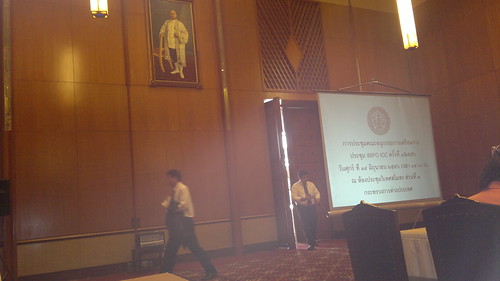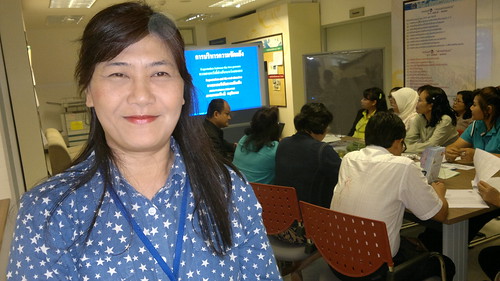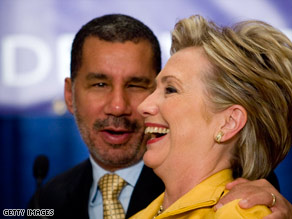
In a 2-1 decision issued earlier today, the Federal Circuit affirmed a determination by the Board of Patent Appeals and Interferences upholding the rejection of the claims of U.S. Application No. 10/650,509 for obviousness-type double patenting over U.S. Patent No.
7,601,685. The '509 application, which is assigned to the California Institute of Technology (Caltech), is directed to matrices containing bidomain peptides or proteins. Claim 18 of the '509 application recites "[a] bidomain protein or peptide comprising a transglutaminase substrate domain and a polypeptide growth factor." The named inventors on the '509 application are Jeffrey Hubbell, Jason Schense, Andreas Zich, and Heike Hall, all of whom were affiliated with Caltech at the time the claimed invention of the '509 application was made.
In 1998, some five years before the '509 application was filed, Dr. Hubbell moved from Caltech to Eidgenössische Technische Hochschule Zürich (ETH Zürich). In 2002, the application that issued as the '685 patent was filed. The '685 patent, which is jointly assigned to ETH Zürich and Universitat Zurich, lists Dr. Hubbell, Dr. Schense, and Shelly Sakiyama-Elbert as inventors (Anna Jen is also listed as an inventor on a Certificate of Correction). Thus, the '509 application and '685 patent do not have common inventive entities or common owners. Claim 1 of the '685 patent recites:
1. A fusion protein, comprising:
(i) a first protein domain;
(ii) a second protein domain; and
(iii) an enzymatic or hydrolytic cleavage site between the first and the second domains;
wherein the first domain is a growth factor selected from the group consisting of the platelet derived growth factor superfamily and the transforming growth factor beta (TGFβ) superfamily;
wherein the second domain is a crosslinking Factor XIIIa substrate domain;
wherein the enzymatic cleavage site is selected from the group consisting of proteolytic substrates and polysaccharide substrates, and
wherein the hydrolytic cleavage site comprises a substrate with a linkage which undergoes hydrolysis by an acid or a base catalyzed reaction.
During prosecution, the Examiner rejected the claims of the '509 application for obviousness-type double patenting over, inter alia, the application that issued as the '685 patent. In particular, the Examiner determined that the conflicting claims in the '685 patent were directed to species of the claimed invention of the '509 application and therefore anticipated the claimed invention of the '509 application. On appeal, the Board affirmed the Examiner's obviousness-type double patenting rejection over the '685 patent, determining that claim 1 of the '685 patent recites a protein that contains both of the features required in rejected claim 18, and that claim 18's use of the term "comprising" allowed for inclusion of the additional elements recited in claim 1 of the '685 patent. The Board also rejected Appellants' argument that common ownership was a requirement for obviousness-type double patenting, citing MPEP § 804(I)(A), which states that "[d]ouble patenting may exist between an issued patent and an application filed by the same inventive entity, or by a different inventive entity having a common inventor, and/or by a common assignee/owner." Appellants appealed the Board's affirmance of the Examiner's rejection to the Federal Circuit.
On appeal before the Federal Circuit, Appellants argued that obviousness-type double patenting should not apply where an application and a conflicting patent share common inventors but do not have identical inventive entities, were never commonly owned, and are not subject to a joint research agreement. Alternatively, Appellants argued that they should be allowed to file a terminal disclaimer as an equitable measure, or that the Court should employ a two-way obviousness analysis for the rejected claims. The U.S. Patent and Trademark Office countered that (1) whether the '509 application and '685 patent were ever commonly owned was immaterial to the policy of preventing harassment by multiple assignees; (2) identity of inventors is not required where there is an overlap in the inventors; (3) Appellants had not established any grounds upon which they should be allowed to file a terminal disclaimer; and (4) Appellants were not entitled to a two-way obviousness analysis because they admitted to being partially responsible for the delay that caused the '685 patent claims to issue first.
Noting that the Board's affirmance was based in part on § 804(I)(A) of the MPEP, Judge O'Malley, writing for the majority, indicated that "the MPEP standard is consistent with the rationale we have used to support application of obviousness-type double patenting rejections." The rationale being the concern over potential harassment of an infringer by multiple assignees asserting essentially the same patented invention (as well as preventing unjustified extension of the right to exclude). Judge O'Malley also noted that it had previously rejected Appellants' argument that obviousness-type double patenting should never be applied in the absence of common ownership in two other cases:
In re Van Ornum, 686 F.2d 937 (CCPA 1982), where an obviousness-type double patenting rejection over a patent with a common inventor but no common ownership was affirmed, and
In re Fallaux, 564 F.3d 1313 (Fed. Cir. 2009), where the reference patents and application at issue were related only by way of a single common inventor. Although Appellants argued that
Van Ornum and
Fallaux were distinguishable because in those cases the applications at issue were once commonly owned, the majority noted that "the potential for harassment by multiple assignees would [still] exist," and therefore "[Appellants'] distinction does not alleviate the underlying harassment concerns here." The majority also refused Appellants' invitation to create a specific exception barring application of obviousness-type double patenting in instances where the conflicting claims share only common inventors, rather than common ownership, declaring that "[w]e too can find no reasoned basis to differentiate between cases involving identical 'inventive entities' and those where the inventive entities are almost identical when assessing obviousness-type double patenting rejections."














